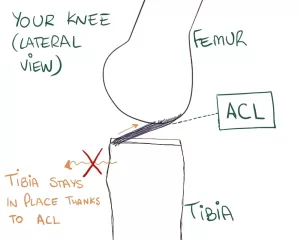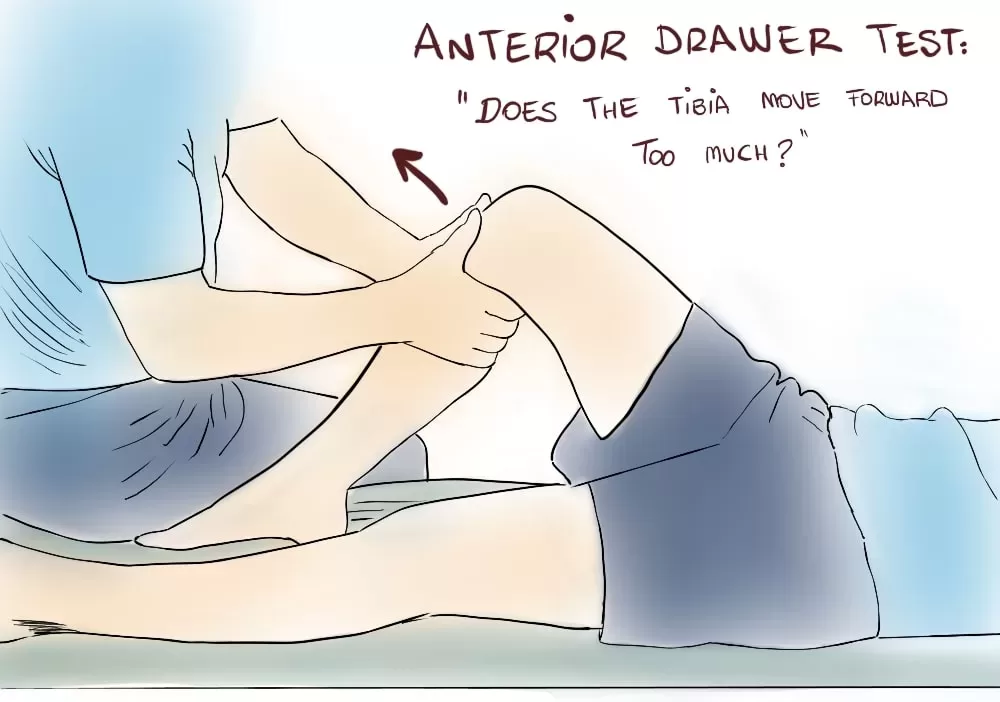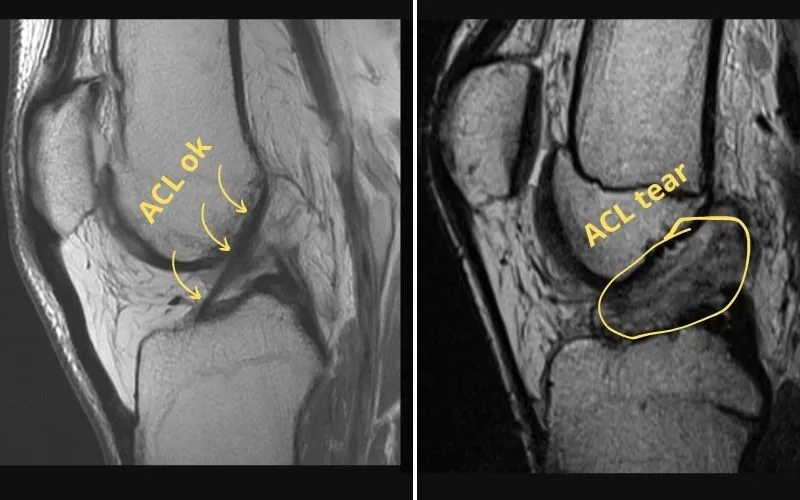An ACL tear is when you break you anterior cruciate ligament (ACL), which is in your knee. Your ACL prevents your tibia—the bone below your knee- to displace forward. That’s why ACL tears may make your knee feel unstable.
You ACL looks like this:

Your ACL basically keeps your femur and tibia together.
How Do ACL Tears Happen?
ACL tears usually happen during sports, especially those with sudden changes of direction like:
- soccer
- football
- basketball
- ski
- combat sports like judo or MMA
When your foot stays planted on the floor but your body moves in another direction, it transmits a torque force to your knee. That twist can make your ACL break.
[box type=”shadow”]
Torque = rotational force
[/box]
How does it feel like when you tear your ACL?
First, you may feel a popping sensation, like a cable just snapped inside your knee.
Then, you’ll feel pain and your knee will get swollen—because your ACL is bleeding.
Most people will have a lot of pain and so they won’t try to walk. However, you may be able to walk even with a torn ACL. That’s because your bone is ok (you don’t have a fracture) so you can bear weight. Your knee will be unstable, though.
After some weeks, the swelling and pain will reduce. Then, you’ll only feel like your knee “gives way” with certain movements.
How do we diagnose an ACL tear?
If you hurt your knee badly you should go see a doctor.
The doctor will examine you to get a first impression. To do that, there are several ways to test your ACL and they don’t require any special tools, like the anterior drawer test.

Usually, you’ll need more tests, though. Physical examination will only get you so far.
An x-ray may be helpful to rule out any fractures but it won’t show the ACL tear. You may get an x-ray if you go to the hospital right after you hurt yourself.
MRI is the best test because it shows all the ligaments (yes, there are other ligaments you can tear), menisci, bone, etc. Check these MRI examples:

The left image shows a nice ACL. On the MRI on your right, however, you cannot see the ACL, because it’s torn.
If your MRI shows an ACL tear, your doctor will explain the different options for you (not everybody decides to go for surgery). If you do choose surgery, there are several ways to do it.
Another reason why we need MRI is because it will show other associated injuries. For example: when you break your ACL, sometimes you’ll also tear your meniscus or your collateral ligaments.
So we need to know every injury in order to plan surgery—it will be more complex if we have to treat several injuries.
Leave a Reply